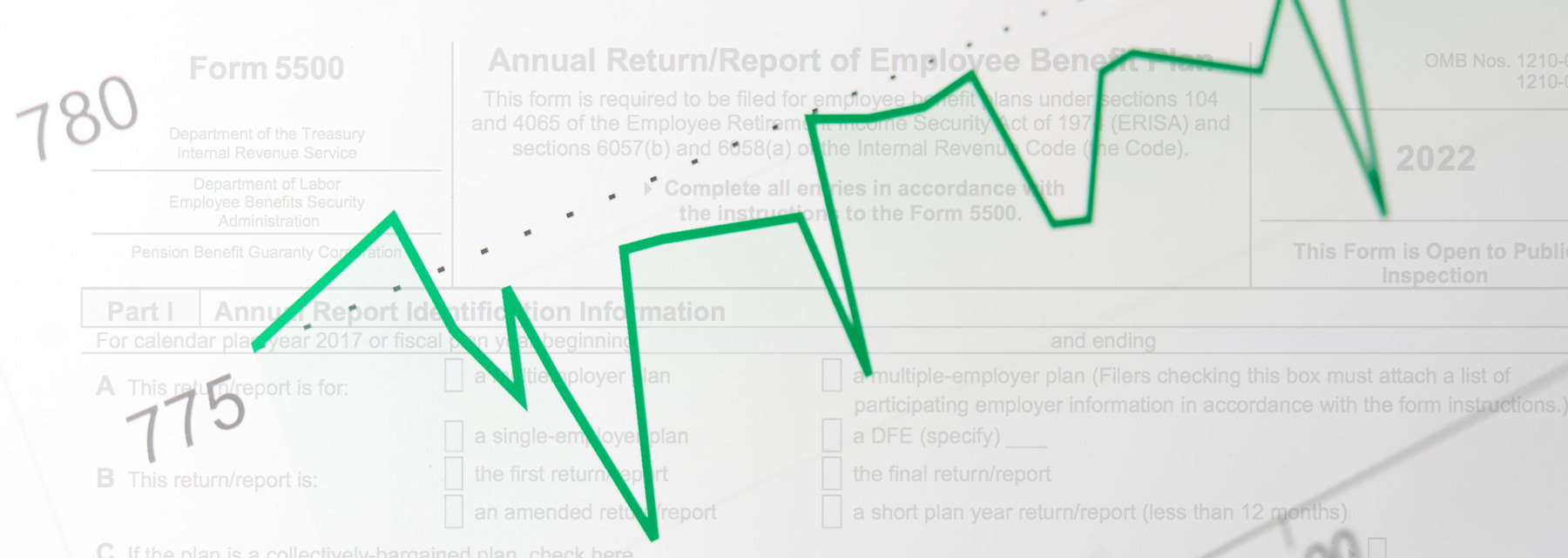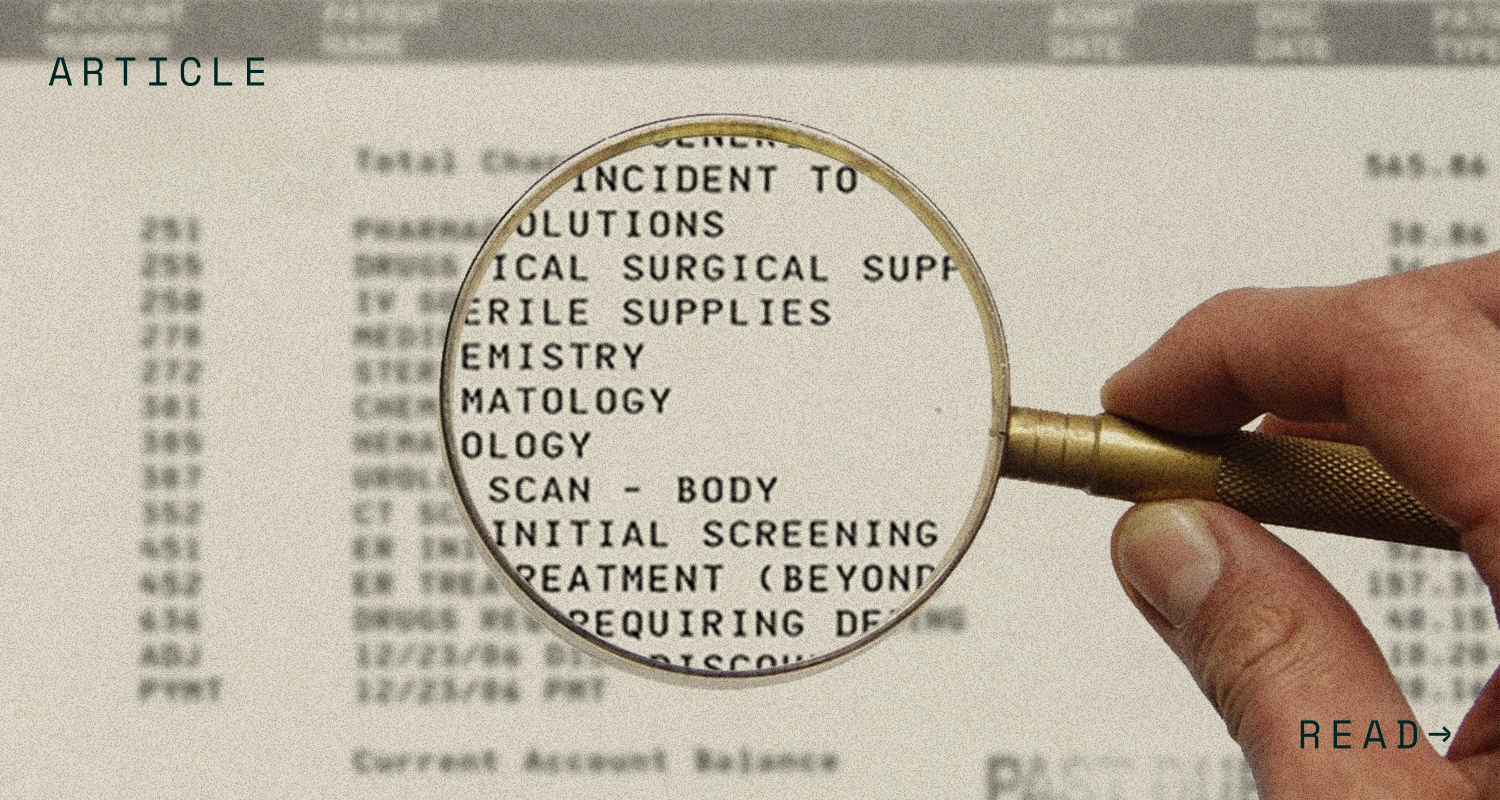Both small and large employers who sponsor a 401(k) plan must file annually with the Internal Revenue Service (IRS). An Employer will either submit a Form 5500, Annual Return/Report of Employee Benefit Plan (Form 5500) or Form 5500-SF, Short Form Annual Return/Report of Small Employer Benefit Plan (Form 5500-SF). On each form, the employer will report certain information about their 401(k) plan to both the IRS and the Department of Labor (DOL) by July 31, 2023 (or October 15, 2023, with an extension).
Note this requirement is separate from the Form 5500 filing obligations required for certain health and welfare plans.
Compliance Snapshot
- Employers with a 401(k) retirement plan with fewer than 100 participants on the first day of the plan year must file a Form 5500-SF, Short Form Annual Return/Report of Small Employer Benefit Plan (Form 5500-SF).
- Employers with a 401(k) retirement plan with 100 or more participants on the first day of the plan year must file a Form 5500, Annual Return/Report of Employee Benefit Plan (Form 5500).
- Please note that unless your plan satisfies an exemption, an audit report from an Independent Qualified Public Accountant (IQPA) must be attached to your Form 5500. If a required audit report is not attached to your Form 5500, the filing may be flagged as incomplete, and penalties may be assessed.
- Both the Form 5500 and the Form 5500-SF are due the last day of the 7th month after the end of the plan year (i.e., for employers with calendar year plans, the Form 5500 or the Form 5500-SF is due on July 31st or October 15th with an extension).
- A draft of the Form 5500/Form 5500-SF will be prepared by your recordkeeper or other vendor. It is the employer’s responsibility to verify accuracy of the reports, engage an independent auditor (if applicable), and ensure completion on an annual basis.
If you are unsure about which filing your Company is supposed to be complete, do not hesitate to reach out to your Financial Services Advisor for guidance.
Frequently Asked Questions
Which employers should file a Form 5500-SF or a Form 5500?
One of two versions of Form 5500 will apply to an employer’s 401(k) plan, described below.
- Form 5500-SF: Applies to most small 401(k) retirement plans with fewer than 100 participants on the first day of the plan year.
The Form 5500-SF is a simplified version of the Form 5500 and must be filed electronically online through the Internal Revenue Service’s ERISA Filing Acceptance System (EFAST2), further addressed below. - Form 5500: Applies to 401(k) retirement plans with 100 or more participants on the first day of the plan year.
Like the Form 5500-SF, the Form 5500 must be filed electronically online through the EFAST2 system, further addressed below.
When are 5500 filings due?
The filing is due at the end of the seventh month after the end of the 401(k)’s plan year (e.g., July 31st for calendar-year plans), with the option of filing for a two-and-a-half-month extension. So, if a plan’s 2022 plan year is based on the calendar year, the Form 5500 is due on July 31, 2023, unless the plan sponsor/plan administrator requests an extension by the original filing due date by filing a Form 5558, Application for Extension of Time to File Certain Employee Plan Returns. The plan’s recordkeeper/vendor partner will assist in filing the extension and should notify when doing so. To confirm an extension has been completed, contact your recordkeeper/other vendor partner.
How do employers file their Form 5500-SF or Form 5500 online?
To file a Form 5500-SF or Form 5500 online, an employer will need to register on EFAST2’s website1. Here are ten steps to follow for registration – all of which only take a few minutes to complete.
- Once on the EFAST 2 website, select “Register” on the welcome screen.
- Read and accept EFAST2’s privacy statement.
- On the next screen, provide the employer’s contact information, including a contact name as well as the company’s address and phone number. Next, select the category best describing the company. For example, if the employer is preparing, signing, and submitting the Form 5500 or Form 5500-SF, then select “Filing Author” and “Filing Signer.”
- Next, select and provide an answer for one of the two security questions, helping to identify the account if the password is lost.
- After verifying that all information is correct, a registration confirmation screen appears, stating that the employer’s EFAST2 registration is pending until the designated contact person receives credentials (along with additional instructions). Note EFAST2 generates credentials and sends them to the company’s contact person by email within five minutes.
- Once the EFAST2 credentials are received, click on the link in the email which then redirects to a secure EFAST2 website. At that point, the employer will then answer the chosen security question.
- Next, the employer must accept a PIN Agreement, which explains the PIN’s security and what to do if the PIN is lost.
- Additionally, the employer will be asked to sign a Signature Agreement. This last agreement only applies if the employer will be the one to sign the Form 5500 or Form 5500-SF filing.
- The employer will also be asked to create a password.
- Finally, the EFAST2 registration is complete, allowing the employer to file the Form 5500 or Form 5500-SF online.
For more information on EFAST2 credentials, see the U.S. Department of Labor’s Frequently Asked Questions for EFAST22.
Is there a penalty for filing the Form 5500 or Form 5500-SF late?
Employers may be subject to substantial penalties for failing to file the appropriate Form 5500 in a timely manner or for filing an incomplete 5500. The IRS penalty for late filing of a 5500-series return is $25 per day, up to a maximum of $15,000. For returns required to be filed after December 31, 2019, the penalty for failure to file is increased to $250 a day (up to ($150,000). See IRC Section 6652(e). The DOL penalty for late filing can run up to $2,529 per day, with no maximum.
Therefore, it is imperative that employers review and confirm which Form 5500 they should file with their Financial Services Advisor and that they review any draft filings provided by their recordkeeper for accuracy.
Are employers required to keep copies of their 5500 filings?
Yes, employers must keep a signed copy of the original Form 5500 filing on file for at least 6 years from the date of filing.
Recommended Employer Actions
Ultimately, the employer is responsible for its Form 5500’s contents and timely filing, even if a draft is prepared by a 401(k) plan recordkeeper or other vendor.
Therefore, employers should review and confirm which Form 5500 they should file. Further, employers should review any draft filings provided by their recordkeeper for accuracy.
Originally posted by Jenny Kiesewetter on July 22, 2022. Updated as of June 2023.
Additional Resources
- Department of Labor. (n.d.) EFAST2 Welcome. Retrieved on July 20, 2022, from https://www.efast.dol.gov/welcome.html.
- Department of Labor. (n.d.) EFAST2 Frequently Asked Questions. Retrieved on July 20, 2022, from https://www.efast.dol.gov/faq/faq_efast.html.
- Internal Revenue Service. (n.d.) Form 5500 Corner. Retrieved on July 20, 2022, from https://www.irs.gov/retirement-plans/form-5500-corner.
- Department of Labor, Employee Benefits Security Administration. (n.d.) Form 5500 Series. Retrieved on July 20, 2022, from https://www.dol.gov/agencies/ebsa/employers-and-advisers/plan-administration-and-compliance/reporting-and-filing/form-5500.
Pensionmark Financial Group, LLC (“Pensionmark”) is an investment adviser registered under the Investment Advisers Act of 1940. Financial Advisors at Pensionmark may also be registered representatives of Pensionmark Securities, LLC (member SIPC), which is affiliated with Pensionmark through common ownership.
Disclaimer: This content is intended for informational purposes only and should not be construed as legal, medical or tax advice. It provides general information and is not intended to encompass all compliance and legal obligations that may be applicable. This information and any questions as to your specific circumstances should be reviewed with your respective legal counsel and/or tax advisor as we do not provide legal or tax advice. Please note that this information may be subject to change based on legislative changes. © 2023 Sequoia Benefits & Insurance Services, LLC. All Rights Reserved




